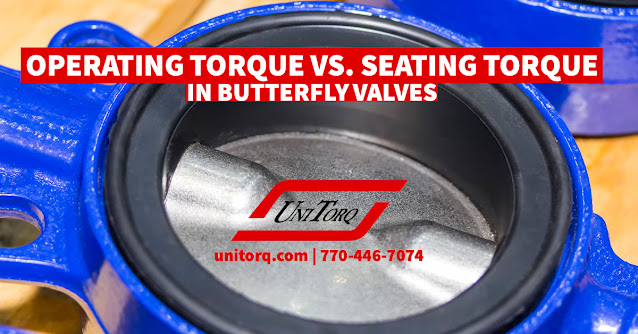A butterfly valve is a type of quarter-turn valve that regulates fluid flow. It comprises a rotating disc in the middle of a pipe and an actuator to turn it parallel or perpendicular to the flow. The disc is attached to a stem operated by the actuator.
The two key aspects that play a crucial role in the operation and functionality of these valves are operating torque and seating torque:
- Operating Torque: This is the torque required to rotate the butterfly valve disc from the fully open position to the fully closed position (or vice versa). This torque is directly related to the fluid pressure and friction caused by the moving parts of the valve. It generally stays relatively constant throughout the open/close cycle, although it can fluctuate slightly depending on the valve's position and the fluid's flow rate and pressure.
- Seating Torque: Seating torque, also known as closing or breakout torque, is the additional torque needed to fully seat or unseat the valve (i.e., to move the disc from nearly fully closed to fully closed or from fully closed to slightly open). The seating torque is usually higher than the operating torque because it has to overcome additional forces like seal friction or pressure drop across the valve when it's nearly closed.
It's essential to distinguish between these two torque types when sizing a valve actuator for a few reasons:
- Avoiding Undersizing: An undersized actuator may not have sufficient torque to open or close the valve fully, mainly considering the valve's seating torque, which can cause a valve to be stuck in an undesirable position, potentially impacting process control and safety.
- Avoiding Oversizing: Conversely, if an actuator is too large, it could produce excessive torque that may damage the valve's seals or other components.
- Safety and Reliability: Actuators are typically sized with a safety factor to ensure reliable operation under various conditions (changes in pressure, temperature, etc.). Knowing the operating and seating torque allows for more precise sizing, contributing to the valve's overall safety, reliability, and lifespan.
- Efficiency and Cost: Correctly sizing an actuator contributes to energy efficiency, as an oversized actuator uses more energy than required. It also avoids unnecessary costs associated with purchasing and maintaining a larger actuator than needed.
- Adaptability: Having precise knowledge of operating and seating torque enables the actuator to adapt to possible changes in the process conditions (such as pressure, flow rate, or media composition), which may increase the torque requirements.
Understanding the operating and seating torque is essential for the optimal selection, operation, and maintenance of butterfly valves and their actuators.
UniTorq Actuators and Controls
2150 Boggs Road, Suite 410
Duluth, GA 30096
Phone: (770) 446-7074
Fax: (770) 447-1825
